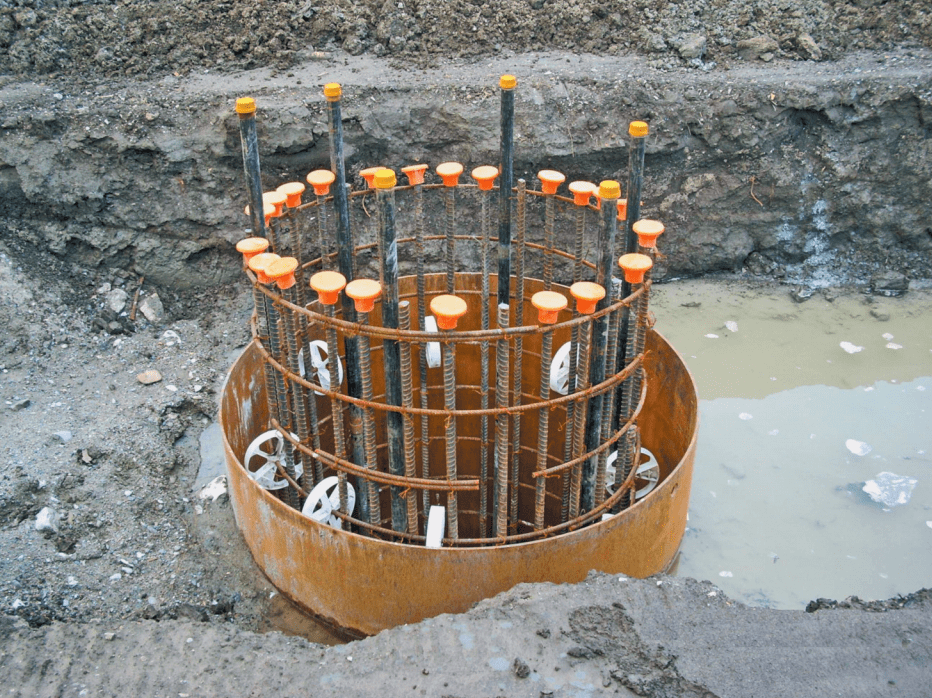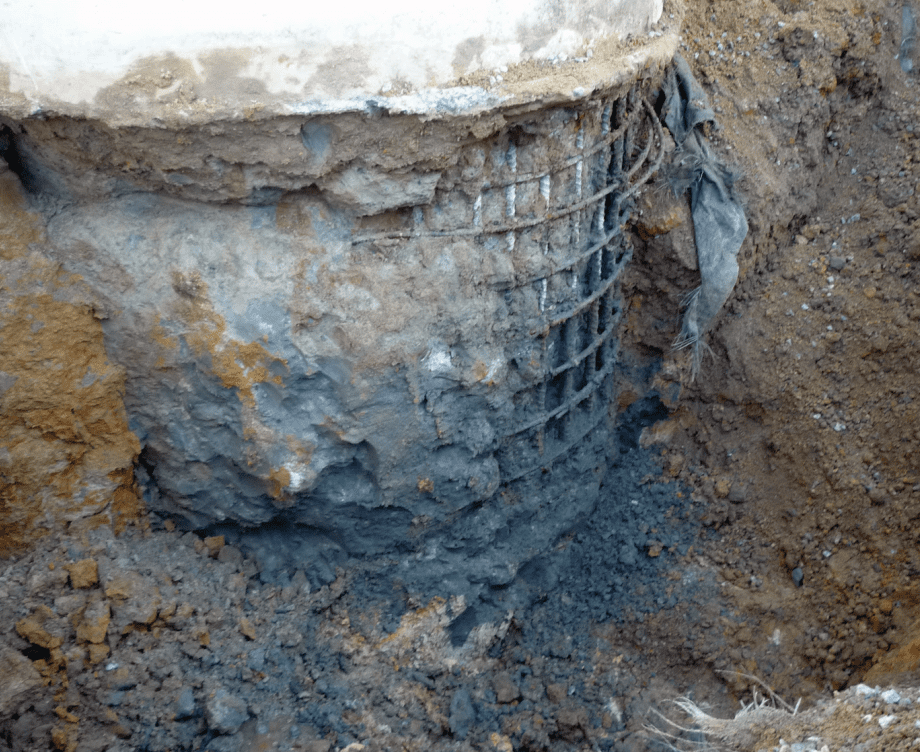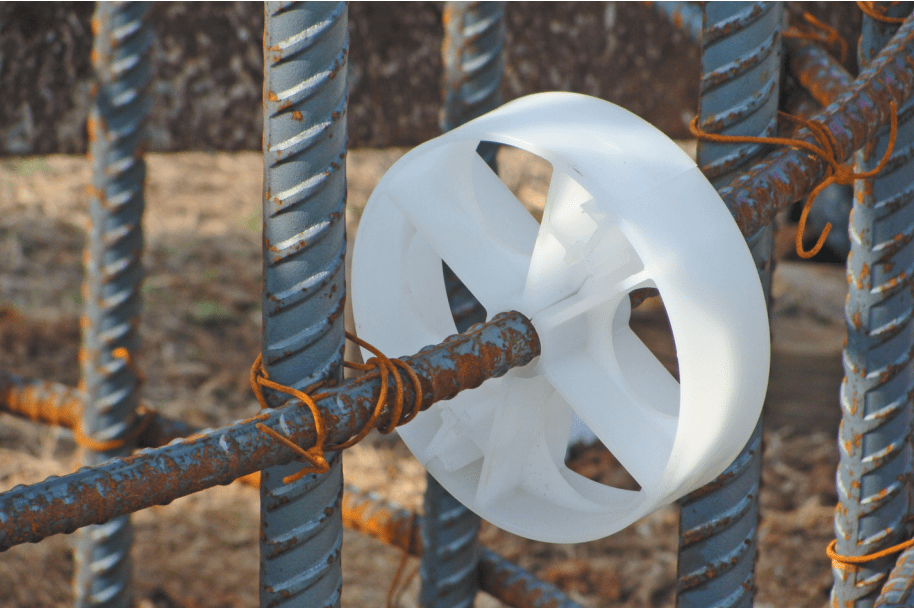Reinventing the Wheel
Drilled shaft installation problems solved and substantial dollarssaved utilizing cost effective spacers to ensure quality control.
The following comes to us from Frank Queen with ADSC Associate Member, Foundation Technologies, Inc., Lawrenceville, Georgia. It is part of an ongoing series of articles that focus on new developments in equipment and materials in the drilled foundation and anchored earth retention industries. Members of the ADSC’s Associate Committee provide this information. Foundation Drilling magazine greatly appreciates the support it receives from the ADSC’s Associate Members.
As drilled shaft construction installations have evolved over the years, two age old problems have been successfully solved. The first relates to design engineers interested in maintaining the structural integrity of a completed drilled shaft. The second relates to drilled shaft contractors and the construction techniques used to insure the proper placement of the vertical reinforcing steel cage within an excavated shaft. 
Structural integrity is of utmost importance when designing and specifying a drilled shaft foundation. Two design issues of concern that can affect the quality of a drilled shaft are insufficient concrete cover and eccentric cage alignment. These issues have caused engineers to enforce more stringent requirements within specifications in order to ensure bar reinforcement is correctly assembled, properly tied, and securely positioned within the confines of the excavated shaft prior to concrete placement.
Maintaining concrete clearance of the drilled shaft reinforcing steel cage within the excavated shaft has often been an albatross of sorts for contractors. On too many occasions drilled shaft contractors have had to reconstruct shafts due to the reinforcing steel cage racking (twisting) in the shaft losing its structure and/or hanging-up against the steel casing during the casing extraction process. Often times, drilled shafts have to be reconstructed because of problems inherent in maintaining the proper clearances prior to and after concrete placement. The reconstruction of the shaft is usually very costly and time consuming. Considering all of the costs associated with reconstructing a shaft; the cost of equipment, additional labor, purchasing new steel or spending time cleaning existing steel, additional concrete, upsetting the pouring schedule, and the havoc this problem creates on an overall project timeline, one simple inexpensive quality control measure can minimize or eliminate the problem. This predicament has plagued the drilled shaft industry for years until development of the ShaftSpacer© System to help correct this costly reoccurring problem.

Keeping the proper clearances off the vertical shaft wall or casing surface during concrete placement is imperative. In the past it was usually left up to the contractor to come up with a means of meeting the project design clearance requirement. Having been a contractor, I found that by casting concrete wheels and opening the circular tie on the reinforcing cage, threading the wheels onto the circular tie and positioning the wheel spacers at intervals along the shaft worked well. The problem was that this technique was costly, time consuming, dangerous (the potential for falling blocks of unreinforced concrete onto the ground as the cage was being inserted), not to mention the procedures usually resulted in the distortion of the circular tie when it was tied back into place on the cage. There had to be a better way.
Enter the reinvention of the wheel. Foundation Technologies, Inc. took the previous method of constructing concrete wheels for clearance and ease of installation used in the past and created a product more economical to use and to produce, safer and easier to utilize and handle in the field. This eliminated the need to open and distort an existing circular tie on the cage. Prior to the steel reinforcement cage being lowered into the excavated shaft, heavy duty high density copolymer centralizing wheels known as ShaftSpacers, are attached to the horizontal reinforcement hoops or spirals asthe cage is being lowered into the excavated shaft. BarBoots are also attached to the bottom ends of the verticalsteel bars to maintain the proper clearance at the bottom of the shaft. The easily installed wheels and boots allow the drilled shaft contractor to lower the vertical steel into position within the shaft by simply rolling the cage into its final resting place, providing a stable positioning of the rebar cage during concrete placement operations.
ShaftSpacer© Systems have proven to be an inexpensive means of ensuring sufficient concrete cover is obtained between the bar reinforcement and the wallsurfaces of the drilled shaft or casing. ShaftSpacer and BarBoot© products have become the preferred choice for drilled shaft construction professionals and engineers throughout North America.
by Frank Queen Foundation Technologies, Inc